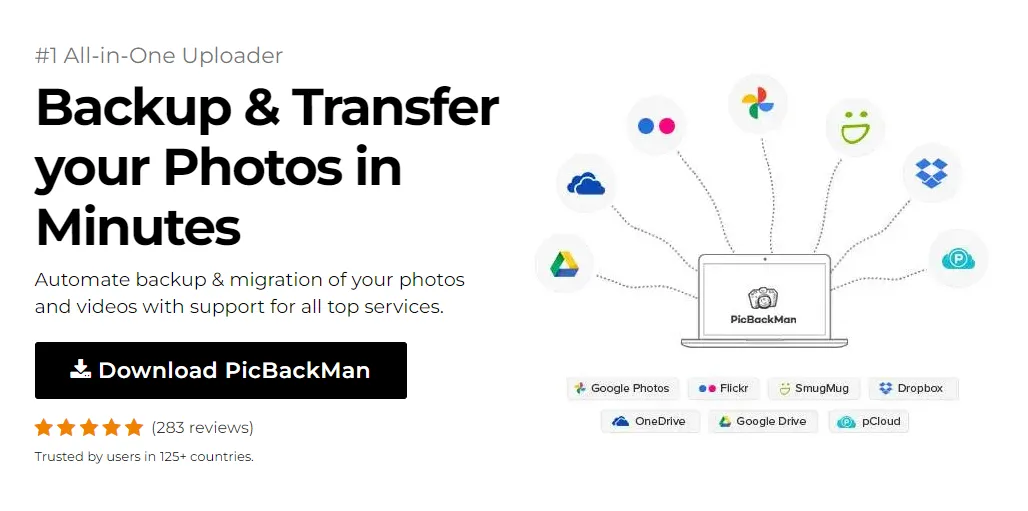
How to Stop Photos Sharing Between Devices


Sharing photos across all your devices can be convenient, but it can also lead to unwanted oversharing. If auto-syncing is enabling broader access to your photos than you realized or intended, not to worry - you can take back control. This guide will cover simple steps to stop photos from automatically spreading across all your gadgets.
The Problem with Instant Multi-Device Photo Sharing
These days, many of our phones, tablets, computers, and other devices are set up to instantly share photos. As soon as you take or save a new picture, services like iCloud Photos, Google Photos, and OneDrive automatically sync it everywhere. This keeps all your latest snapshots conveniently accessible.
However, automatic sharing can also create privacy risks or sharing mistakes if you later have second thoughts about a sensitive photo. Once an image syncs across your ecosystem of devices, it can be difficult to track where it has spread and pull it back.
Fortunately, each platform provides options to limit automatic sharing. You can decide exactly which photos should sync cross-device and disable instant oversharing.
Cutting Off Photo Sync & Backup on iPhone
Apple devices enable seamless sharing of photos through iCloud Photos, My Photo Stream, and iCloud Photo Sharing. Here's how to limit syncing:
Disabling iCloud Photos Library Sync
The iCloud Photos feature creates a master photo library accessible on all linked devices. Turn this option off in Settings > [Your Name] > iCloud > Photos. Existing photos will stay in the cloud but new ones won't auto-sync.
Turning Off My Photo Stream
Disable this option in Settings > [Your Name] > Photos. It shares your latest 1,000 photos taken, which could reveal sensitive images before you have a chance to manage them.
Removing Shared Albums
In the Photos app, select Shared, choose the album you created, and tap Delete to remove the synced collection from your devices and discontinue updates.
Halting Photo Backups on Android
Android phones make your shots viewable everywhere by auto-saving them to the cloud. Stop this with these adjustments:
Pausing Google Photos Backups
Open the app, tap your profile icon > Photos settings > Back up & sync, then turn off backup. This prevents adding more photos while keeping your existing library available.
Disabling Sync to Cloud Drives
Open device settings like Drive or OneDrive, select your account, tap Photos and toggle the auto-upload option off. Repeat for any other services set to receive copies.
Switching to a Private Gallery App
Use a third-party photo organizer like Simple Gallery that stores images only on-device instead of syncing them into the cloud ecosystem.
Stopping Photo Spread on Windows
Windows computers feature deep integration with Microsoft's cloud storage service OneDrive. Disable the auto-sharing behaviors with these steps:
Turning Off OneDrive Photo Backup
Right-click the OneDrive icon in the system tray and select Settings > Backup > Manage backup > Uncheck "Back up my photos and videos."
Disabling Photo Additions in Other Cloud Drives
Access the sync settings for services like Google Drive or Dropbox and turn off camera uploads to stop photos from spreading to these destinations.
Using Windows 10 Photo App Instead of Cloud
The native Photos app keeps images local-only instead of syncing them across OneDrive or SharePoint. Use this as your main photo management tool.
Preventing Photo Leaks on Mac
Apple offers easy photo sharing between Macs and iOS gear. Scale back the connectivity via iCloud Photos, Photo Stream and cloud drives:
Disabling iCloud Photo Library on Mac
In System Preferences select Apple ID > iCloud then toggle off iCloud Photos to keep your Picture Library isolated on this device.
Turning Off My Photo Stream
Go back to iCloud settings in System Preferences and uncheck My Photo Stream so this sync conduit is disabled.
Removing Cloud Drives' Uploads
Open cloud storage apps like Google Drive or Dropbox, click the gear icon to reach settings then disable camera uploads.
Shifting to Manual Photo Sharing
If you want to maintain some cross-device access without everything auto-syncing instantly, try these selective sharing tactics instead:
Backup & Transfer your Photos in Minutes
Trusted by users in 125+ countries.
Email or AirDrop Important Photos
Manually decide which worthy photos should be copied elsewhere rather than default syncing everything indiscriminately.
Create Albums to Share Selectively
Organize chosen photos into albums on a master device, then share just those albums so you limit exposure of your whole library.
Set Up Separate Photo Libraries
Maintain different Pictures folders for public life versus private moments, only syncing the public one across your ecosystem.
Locking Down Photo Privacy
Don't neglect physical device protections that prevent unwanted photo peeking or leaks:
Enable Lock Screens
Use screen locking with passcodes so only you can unlock devices and view photos stored there, ensuring basic access control.
Turn On Storage Encryption
Encrypt saved data including photo galleries so anyone stealing the hardware can't actually access the images and videos saved there.
Install Anti-Theft Tools
App store offerings like Find My and Prey locate, remotely lock or fully wipe contents of missing equipment to protect images. Enable them before devices disappear.
Helpful Habits for Managing Photo Spread
Along with adjusting platform settings as covered above, building ongoing privacy habits protects photos over time:
Review Auto-Sharing Settings
Periodically audit the upload and access settings across devices and services to ensure unwanted spread isn't creeping back on.
Delete Embarrassing Images
This sounds obvious but is easy to forget. Remember to manually remove inappropriate, risky or regretted photos lingering anywhere.
Check Storage Volume
If device memory fills up mysteriously fast, unauthorized syncs or unknown leaks could be to blame. Investigate and resolve unusual usage.
Troubleshooting Photo Sync Issues
If disabling certain sharing features causes upload failures or missing data, here are potential fixes:
Update Stalled iCloud Photos
On iPhone go to Photos > Albums > All Photos to manually activate iCloud updating. Toggle iCloud Photos off/on to retrigger syncing.
Restore Missing Images
Consult a device backup or the cloud service's Trash folder. If photos got deleted along the path somewhere, recovery may remain possible.
Handle Conflicting Libraries
When merged libraries show duplicate, mismatched or missing entries, rebuild the central collection from scratch after disabling and re-enabling the sync.
Quick Tip to ensure your videos never go missing
Videos are precious memories and all of us never want to ever lose them to hard disk crashes or missing drives. PicBackMan is the easiest and simplest way to keep your videos safely backed up in one or more online accounts. Simply Download PicBackMan (it's free!), register your account, connect to your online store and tell PicBackMan where your videos are - PicBackMan does the rest, automatically. It bulk uploads all videos and keeps looking for new ones and uploads those too. You don't have to ever touch it.
Frequently Asked Questions About Photo Sharing
Q: What should I do if I suspect an embarrassing or inappropriate photo has leaked somewhere?
A: First, don't panic. Check everywhere possible to locate and permanently delete any copies that made their way online or onto someone else's device. Enable privacy protections going forward. Consider speaking to the recipient if appropriate. Learn from the experience.
Q: Can I recover photos I deleted when disabling a sync service?
A: Often yes. Most services keep files in a Trash or Archive folder for 30-60 days before permanent removal. Check these recovery options before that window closes. Alternatively, restore from your latest device backup if available.
Q: How can I tell if my mobile data plan is being consumed by photo sharing?
A: Check your data usage details in your mobile carrier account. If "System Services" or the Google Photos/iCloud Photos app shows high background traffic, the continuous syncing could be hitting your data cap. Adjust app settings to restrict cellular data.
Q: What's the easiest way to find all devices my photos have spread to automatically?
A: Enable location tracking in your images then check the photo details - modern cameras embed GPS coordinates in the metadata. Cross-reference places the photos have "traveled" recently with your gadget history to identify which ones likely received spreading images.
Q: Is it bad to delete photos that have already synced to the cloud from my phone?
A: No, generally it's fine to delete local copies as long as the online cloud library retains its master version of the uploaded photo safely. Just double check the image deletion didn't cascade across connected services accidentally. As long as the photo survives in the cloud source, other future devices can still access it if you re-share the library down the road.
Q: How can I prevent strangers from seeing my photos if I lose my phone?
A: The key defense is enabling device locking with a strong passcode, fingerprint or face recognition. Also turn on encryption with a device wipe after 10 failed unlock attempts. Add cloud locator and remote wipe functionalities via third party apps as a safety net as well. These precautions secure images if phones get lost or stolen.
In summary, major operating systems and cloud platforms today enable effortless sharing of photos across your ecosystem. While convenient, this can lead to unintended overexposure of private, embarrassing or sensitive images accidentally. Thankfully each system offers tools to limit syncing and sharing selectively based on your comfort level. With some adjustments to change default behaviors, you can confidently snap pictures while regaining control over where images ultimately flow.
Backup & Transfer your Photos in Minutes
Automate backup & migration of your photos & videos with support for all top services.
Trusted by users in 125+ countries.










